Springtime offers endless opportunities to catch glimpses of the different types of wildflowers native to Tennessee.
Many wildflowers in Tennessee bloom throughout spring, while others start to pop up in the summer. Some even give the splendid fall colors of changing leaves a run for their money, blooming later in the year.
While native wildflowers are a joy to behold, let’s not forget their ecological importance. Many wildflowers in Tennessee are vitally important to pollinators, including Tennessee birds, bees, and butterflies.
They may also provide food for small mammals and insects. The root systems of native wildflowers play a role in the health of the soil, providing vital nutrients and helping to prevent erosion.
While it is satisfying to go driving or hiking through Tennesee and see the myriad colors of pretty flowers, it’s even more gratifying when you have a little knowledge about what it is you’re looking at.
Identifying wildflowers needn’t be left to the botanists. Read on for our in-depth guide to the habitat, growing conditions, and anatomy of some of our favorite native wildflowers in Tennessee.
This will not only give you a better chance at finding some of these beauties, but allow you to floor your friends with your outstanding prowess in the identification of Tennessee wildflowers.
READ MORE: The 20 Most Beautiful Wildflowers in Virginia (& Where to See Them)
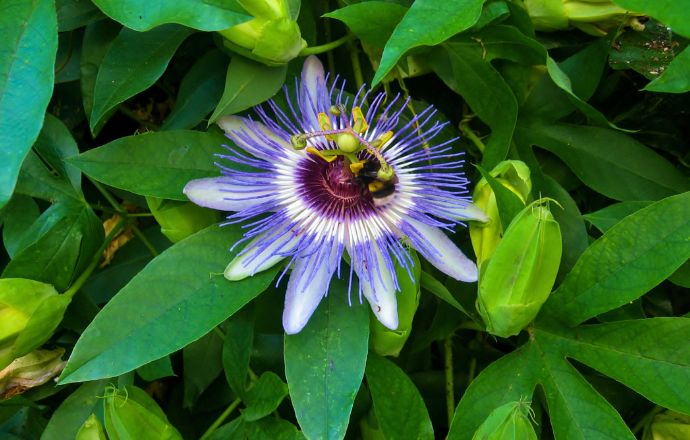
Wildflowers of Tennessee Guide
- Black-Eyed Susan (Rudbeckia hirta)
- Dog Hobble (Leucothoe fontanesiana)
- Dwarf Crested Iris (Iris cristata)
- Evening Primrose (Oenothera speciosa)
- Fire Pink (Silene virginica)
- Giant Ironweed (Vernonia gigantea)
- Ghost Pipes (Monotropa uniflora)
- Jack-in-the-Pulpit (Arisaema triphyllum)
- Joe Pye Weed (Eutrochium Spp)
- Nashville Breadroot (Pediomelum subacaule)
- Trout Lily (Erythronium americanum)
- Virginia Bluebells (Mertensia virginica)
- Wild Bergamot (Monarda fistulosa)
- Wild Columbine (Aquilegia canadensis)
- Wild Oat (Uvularia perfoliata)
READ MORE: North Carolina Wildflowers Guide (& Where to See Them)
Native Wildflowers in TN
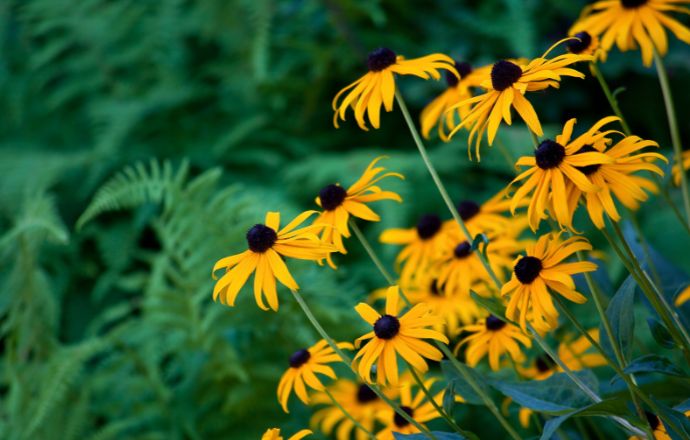
1. Black-Eyed Susan (Rudbeckia hirta)
Black-Eyed Susans are actually from the same family as Echinacea. This can be seen in the cone-like center, leaves, and daisy-like flowers of both plants.
These lovely orange wildflowers are commonly found in Middle and East Tennessee, but less so in the West. Look out for Black-Eyed Susans blanketing meadows, prairies, and forest edges.
They prefer full to part sun, and can grow in moderately wet to dry conditions. Black-Eyed Susans aren’t too picky when it comes to soil types, as long as it’s not too rocky.
A single flower adorns each stem, and they can reach up to two feet in height. They tend to bloom from June to August, and shed their seeds to create a new crop the next year.
They attract a number of birds and butterflies, and are considered deer-resistant wildflowers.
READ MORE: The 15 Best Things to Do in Great Smoky Mountains National Park
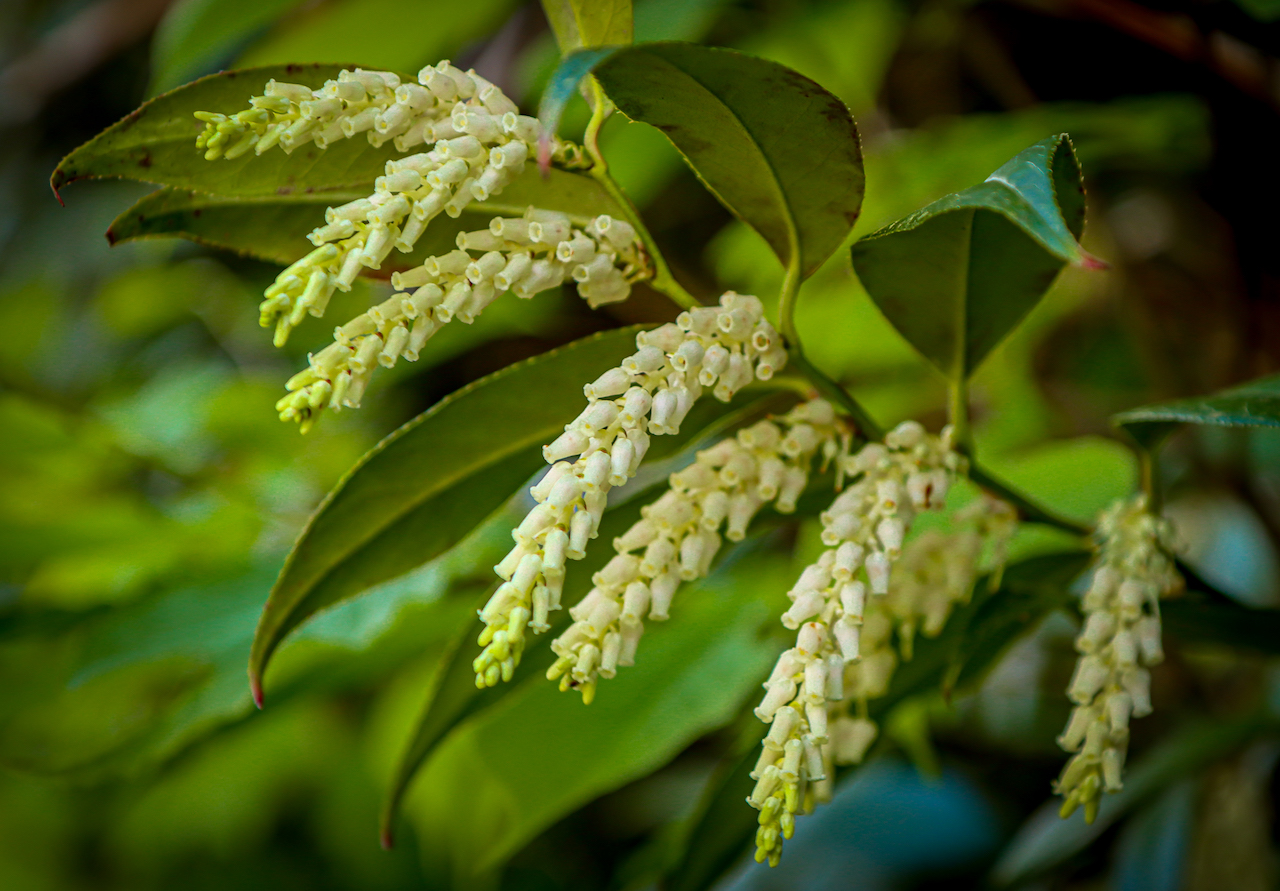
2. Dog Hobble (Leucothoe fontanesiana)
Dog Hobble may not be the prettiest of names.
But they do boast gorgeous, delicate flowers can often be found in dense, moist thickets, particularly along mountain rivers, streams, and creeks.
This evergreen shrub is actually a member of the blueberry family, with flowers that share a resemblance. However, DO NOT confuse this toxic plant with its edible cousin!
Dog Hobble shrubs can reach about 3-6 feet in height and width, and usually show off their blooms in April and May.
Their new growth foliage is often red and fragrant, with creamy white flower clusters drooping downward from the underside of the branches.
This shrub is important to pollinators, as well as providing habitat for small birds and mammals.
READ MORE: The 10 Best Lakes in Tennessee to Visit
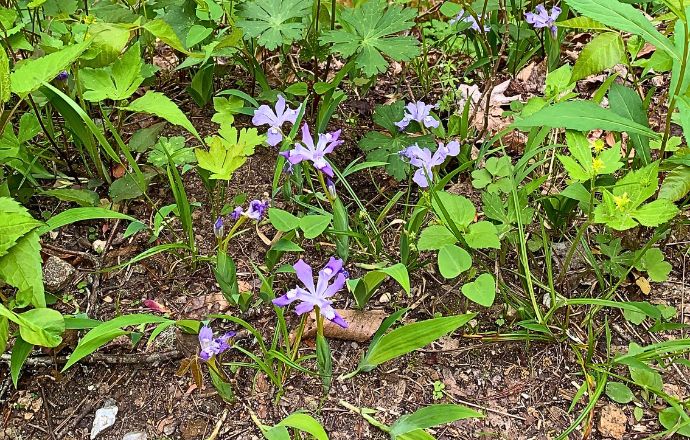
3. Dwarf Crested Iris (Iris cristata)
The Dwarf Crested Iris is another stunning Tennessee native wildflower.
These TN wildflowers are usually purple (but occasionally yellow, white, or pink), and can be found growing in rocky areas and forests.
Keep your eyes peeled for them while walking along woodland hiking trails.
You need to keep your eyes on the ground, as these miniature purple wildflowers in Tennessee only grow 4 to 16 inches tall. They are beloved by bees, butterflies, and hummingbirds.
They’re also conveniently deer-resistant wildflowers, so you might have a chance of enjoying them before they do!
READ MORE: Non-Venomous vs Venomous Snakes in Tennessee (ID Guide)
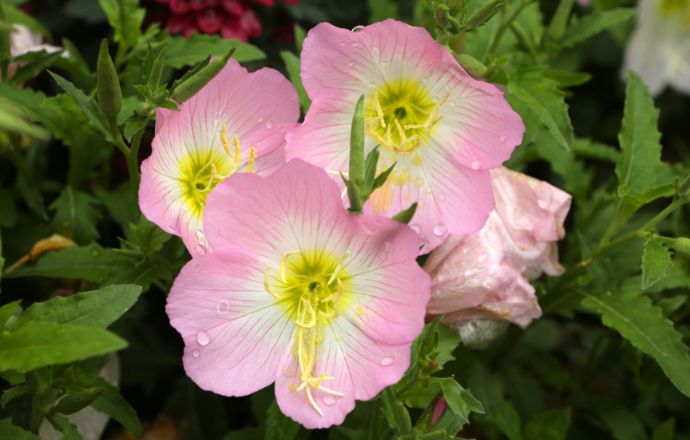
4. Evening Primrose (Oenothera speciosa)
When you hear the name Evening Primrose, you might think of small yellow flowers. But this special pink Tennessee wildflower is just as delightful.
These beauties grow in full to partial shade in medium to moderately dry, rich, sandy, or loamy soil.
Reaching up to 2 feet in height, this is a perennial plant that spreads prolifically by self-seeding to form large colonies.
The showy flowers have four petals and range in color from dark pink to white. As their name suggests, the flowers typically open in the evenings and close again in the morning.
Some say that you can even watch this happening if you’re patient enough!
This plant is deer-resistant, but attracts a whole host of other wildlife. Small birds, especially finches, enjoy the seed pods, while their heavy nectar draws in the pollinators.
READ MORE: The 15 Best Great Smoky Mountains Campgrounds to Visit

5. Fire Pink (Silene virginica)
If you come across a stand of Fire Pink (a.k.a. Scarlet Catchfly), you’ll be struck by its intense carpet of color.
More red than the pink its common name suggests, these low-lying, common wildflowers are striking to say the least.
When you see these wildflowers vivid colors in Tennessee, be sure to stick around to see if you can spot a Ruby-throated Hummingbird, as these are their preferred pollinator.
The bright-red tubular flowers are made up of five notched petals. They grow in clusters atop stems that can be up to 2 feet in height, but they tend to be on the shorter side.
This short-lived perennial prefers rocky slopes at the edge of forests.
Look out for them along the edges of roads or hiking trails.
READ MORE: The 15 Best Things to Do in Lookout Mountain GA/TN

6. Giant Ironweed (Vernonia gigantea)
Here we have another purple Tennessee wildflower that is a member of the Asteraceae (or daisy) family.
This gorgeous flower can often be seen towering along roadsides and in hay fields and farm pastures, especially in moist areas. It’s an important plant for pollinators.
Mature Giant Ironweed plants can reach heights up to 10 feet, and are topped with florets of deep purple flowers. The leaves are dark green, long, and serrated.
Look out for this wondrous weed from late summer through early autumn. They provide a gorgeous pop of color just when you think that blooms are saying goodbye for the winter.
If you find a good stand of them, take a moment to do some butterfly and moth watching. Eupatorium moths, ironweed borer moths, and Pyrlid moths feed on many different species of ironweed.
READ MORE: 20 Ways to Celebrate Christmas in the Smoky Mountains (NC & TN)

7. Ghost Pipes (Monotropa uniflora)
Of all the white wildflowers in Tennessee, there is none more unique than the ghost pipe. If you come across them, you could be forgiven for believing you’ve stumbled upon a funky-looking fungus.
These translucent white, bell-shaped flowers grow deep in the forest, often found close to rotting stumps and logs.
Though they may be seen with a pinkish hue, these white plants do not undergo photosynthesis.
As a result, there is no chlorophyll in them to give that typical green plant color. Instead, the plant feeds on the nutrients and carbohydrates of neighboring tree roots.
Ghost pipes are a perennial plant that can typically be spotted from June through September. You might spy only one stem, but you’re more likely to see them growing in clusters.
They’re about 4-8 inches tall, with just one flower per stem and no discernable leaves.
READ MORE: The Tennessee Legend of the Bell Witch Haunting

8. Jack-in-the-Pulpit (Arisaema triphyllum)
Arguably among the most impressive wildflowers of Tennessee, the Jack-in-the-Pulpit may stop you in your tracks with its striking, yet peculiar, form.
There are 3 leaflets and a stem that can reach up to two feet in height supporting just one bewildering flower.
Shaped like a little jug with a lid on top, the Jack-in-the-Pulpit flower is striped vertically on the inside of the jug and ranges in color from green to purple.
You’ll find them growing along forest floors in moist, shady spots. Once you’ve seen one, keep an eye out for more, as they tend to grow in clusters.
Birds and small mammals enjoy the bright red berries that appear in the late summer.
READ MORE: The Ultimate Ocoee River Rafting Guide
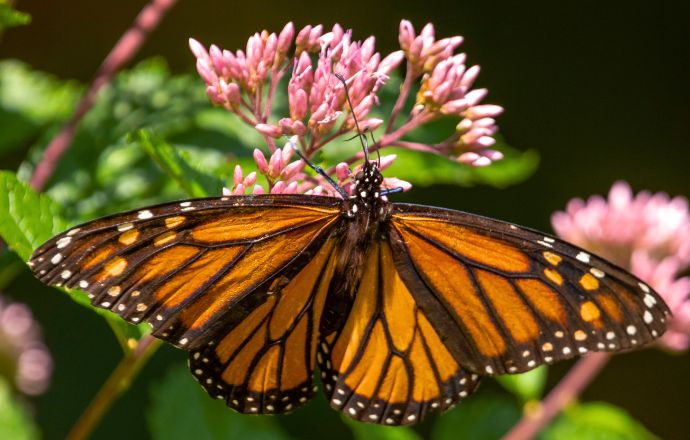
9. Joe Pye Weed (Eutrochium Spp)
A member of the Asteraceae family, Joe Pye Weed stands tall (up to 10 feet, depending on the species), showing off its dusty, sometimes vibrant pink flowers.
These beautiful Tennessee wildflowers are adored by pollinators and attract many species of bees and butterflies, from swallowtails to Monarchs.
Joe Pye Weed can be seen towering above most other vegetation, and can be easily identified by its tall stalks with no branches.
Clusters of pink blooms emerge from the top of the plant, while the leaves whorl around the stalk in groups of three to five.
You can spot these gorgeous Tennessee wildflowers growing along creeks and rivers, at the edge of roads, or in damp woodlands and thickets.
READ MORE: 40 Facts About the History of the Banjo (From Africa to Appalachia)
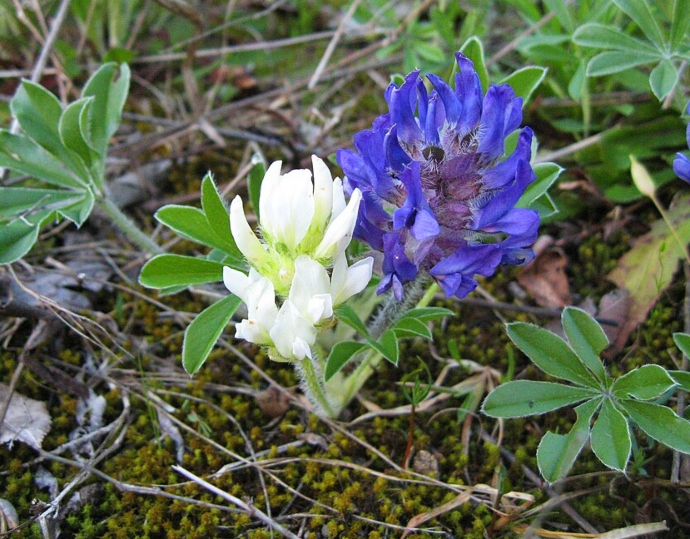
10. Nashville Breadroot (Pediomelum subacaule)
Keep your eyes peeled for this stunning purple wildflower of Tennessee.
Actually a member of the Fabaceae (or pea) family, the Nashville Breadroot is a perennial plant that can grow up to about a foot in height.
Not dissimilar to the beloved Lupine or Bluebonnet, this Tennessee native is equally as showy and spectacular in color.
Start looking for Nashville Breadroot in early April, especially around middle Tennessee. It prefers rocky, alkaline terrain.
Once it has finished blooming in May, the entire plant dies back and goes into dormancy until the next season.
READ MORE: What is Bluegrass? The History & Evolution of Appalachian Music

11. Trout Lily (Erythronium americanum)
The Trout Lily (which is sometimes referred to as Dogtooth) is a native Tennessee wildflower that can be found statewide. But it is most prevalent in middle Tennessee.
These little yellow wildflowers in Tennessee belong to the Liliaceae family, but you’ll need to be on your toes to see the early spring wildflowers.
Though they tend to grow in clusters, they don’t stick around for very long. This spring ephemeral will be gone by the end of the season, only to be seen again a year later.
These low-lying plants can be spotted in partial or fully shaded forest areas, especially along rivers, creeks, and ponds.
Each Trout Lily has one or two leaves and a single flower, which grows upon a stem and then droops towards the ground.
Their leaves are succulent, mottled, and spotty, and some say they resemble the skin of a trout.
READ MORE: 30 Fascinating Facts About the Appalachian Mountains for Trivia Buffs

12. Virginia Bluebells (Mertensia virginica)
The 1- to 2-foot stems of Virginia Bluebells create a blue carpet across moist woodland floors and river flood plains.
You’ll see their green/gray foliage sprawling along the ground, and plumes of bell-shaped flowers nodding their heads downwards.
In early March, you might notice pinkish buds before they mature into the familiar blueish purple trumpets. You can look forward to seeing these little blue TN wildflowers on into June.
Virginia Bluebells are actually thought to be threatened, due to habitat loss and the prevention of natural river flooding.
They’re pollinated by various types of bumble bees, hummingbird moths, and hummingbirds.
READ MORE: The Appalachian Culture & History of the Blue Ridge Mountains
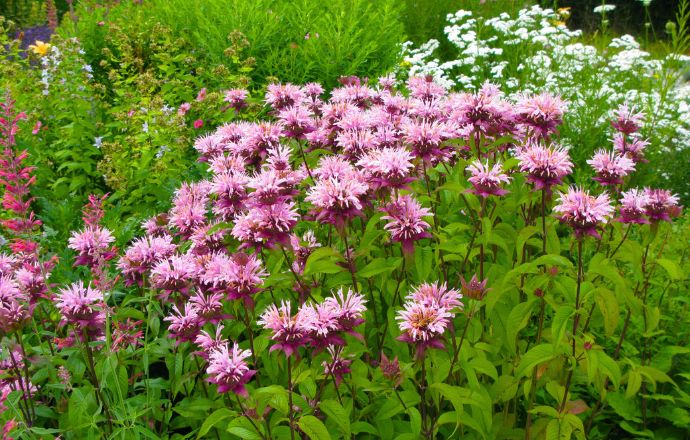
13. Wild Bergamot (Monarda fistulosa)
Wild Bergamot is from the same family as Bee Balm, and their names are often used interchangeably.
There are many members of this Monarda family, with an array of gorgeous colors ranging from deep pinks and purples to fuchsia and pale lilac.
If you rub the leaves of the Wild Bergamot plant, it will release a distinctive aroma similar to that of the True Bergamot plant made famous in Earl Grey Tea.
These stunning flowers tower on tall stems up to 5 feet in height, growing in large clusters that make a sea of color along roads, meadows, and forest margins.
READ MORE: Appalachian Folklore, Monsters and Superstitions
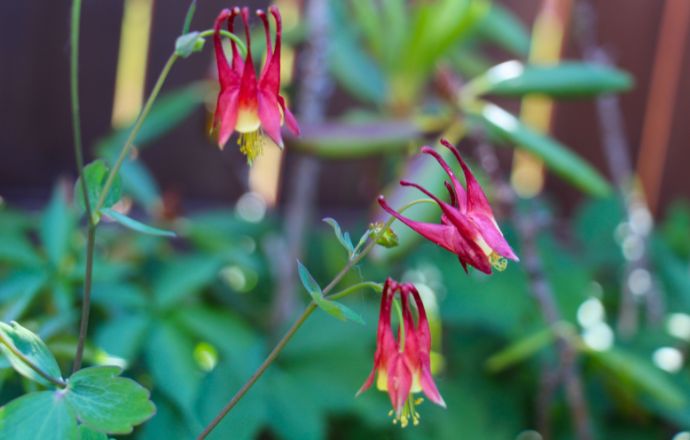
14. Wild Columbine (Aquilegia canadensis)
Anyone who has Columbine growing as an ornamental in their garden knows just how prolifically this gorgeous perennial seeds itself.
If you let those flowers dry up and shed their seeds, you will have Columbine forever! Thankfully, this is also the case for Wild Columbine in Tennessee.
The Latin name Aquilegia means eagle, and refers to how the backsides of the delicate flowers look like talons.
Wild Columbine can typically be found growing on the forest floor, often in a little bit of shade or dappled sun.
It may reach up to three feet in height, with red and yellow flowers nodding toward the ground.
Look for Wild Columbine in the late spring, and watch for the hummingbirds and butterflies that pollinate them, too!
READ MORE: The Ultimate Ocoee River Rafting Guide
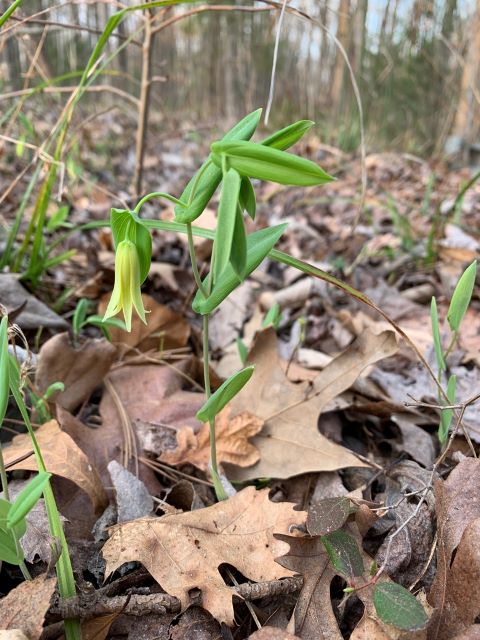
15. Wild Oat (Uvularia perfoliata)
If you search for names of yellow wildflowers in Tennessee, many will show up. But the delicate Wild Oat (a.k.a. Yellow Bellwort) is one little beauty you shouldn’t ignore.
Look for them in rich organic soil in shady spots in hardwood forests, along floodplains, and in dry woodlands.
In spring, a single flower nods its head atop a thin stem that appears to pierce its way through blade-like leaves.
As its name might suggest, this is one of the many edible wildflowers in Tennessee. The leaves and roots can be eaten, and are said to taste a little like asparagus.
IMPORTANT NOTE: Never eat a wild foraged plant without a 100% certain identification. Cross-reference a number of field guides and sources to ensure correct identification, and consult local experts for advice. -by Emma Galllagher; featured image of White Trillium in the Smoky Mountains via Canva




